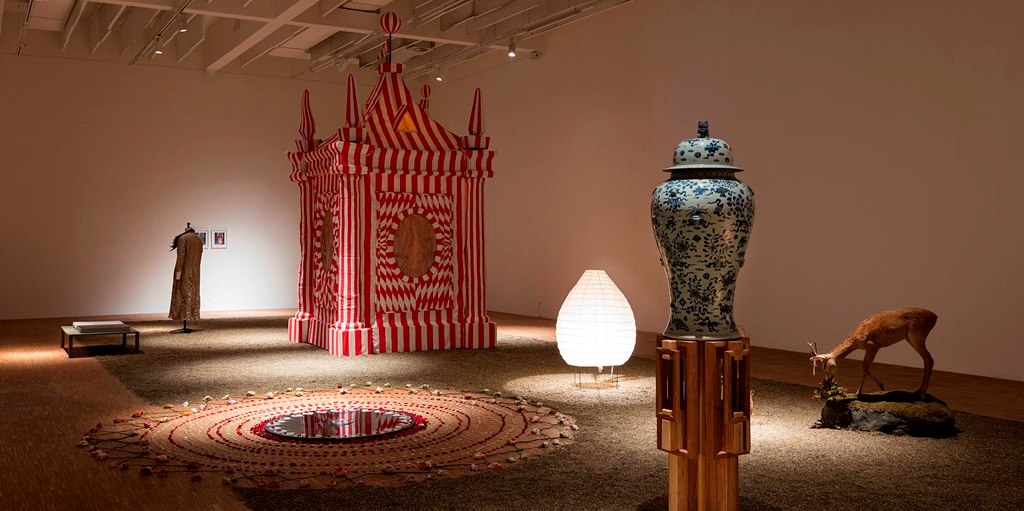
AA Bronson
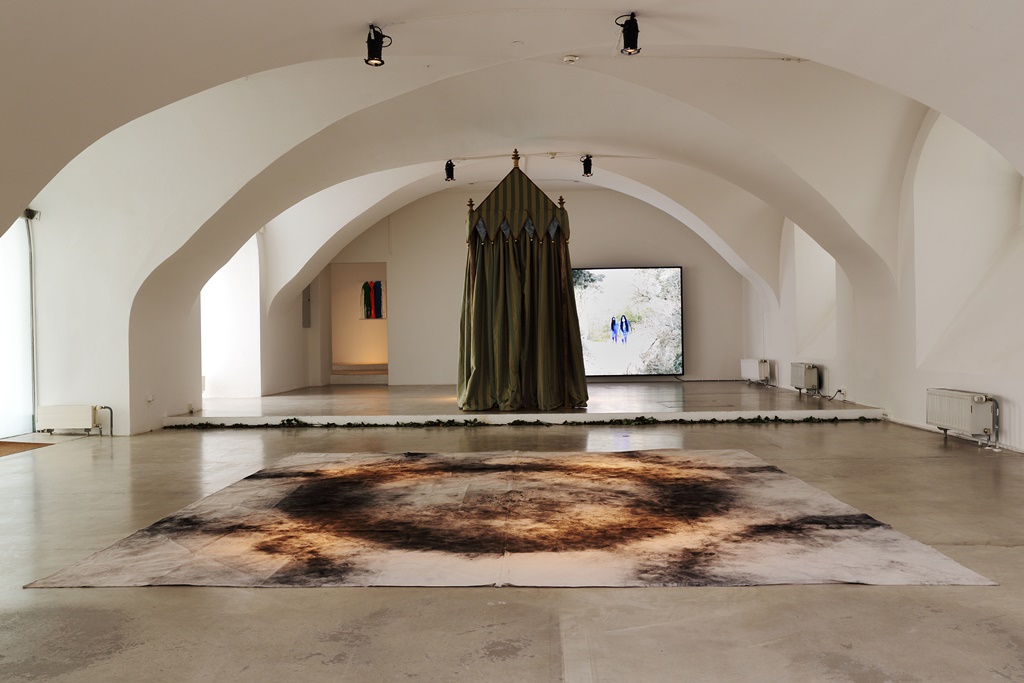
Grazer Kunstverein, in collaboration with Salzburger Kunstverein, invited artist and healer, pioneer of collaborative and queer visual arts practice, AA Bronson to develop a large-scale project in both spaces simultaneously. It resulted in an enchanting and memorable hybrid project which includes several solo works and a few collaborations with younger artists, performances and works by friends.
The title of your current show at the Grazer Kunstverein Sacre du Printemps derives from Igor Stravinsky’s ballet, which was, as for those times, very controversial. Knowing the story and its origin, it could be seen as a quite pessimistic vision. Many sources quote Stravinsky’s memoir where he claimed that the narrative of a ballet had come to him in a horrifying lucid dream: "I saw in my imagination a solemn pagan rite: sage elders, seated in a circle, watching a young girl dance herself to death". At the same time the final piece is seductive and captivating.
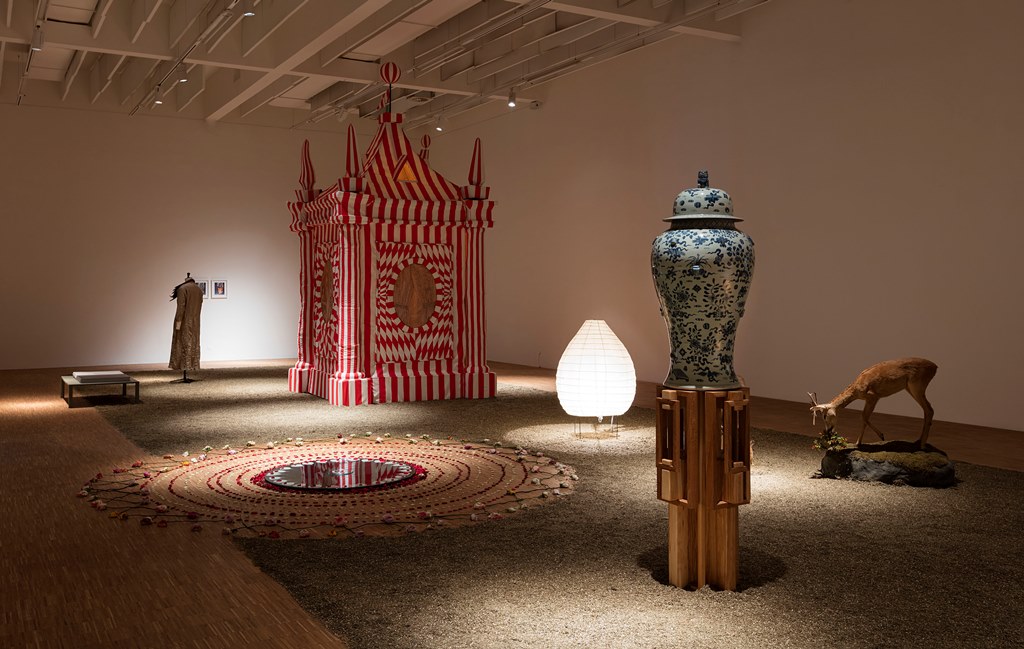
What caught my attention is the fragment of the press release for your exhibition that reads: “At the Grazer Kunstverein, Stravinsky and Nijinsky’s infamous ballet of 1913 gives the name to this sequence of rites and sacrifices, overseen by sage elders, here given form in the person of AA Bronson himself”. I am curious about how do you see yourself in relation to this statement and wat is your role in the show?
I try to live my life as an openly-queer openly-sexual man in an openly-queer community. My exhibitions, like ballets, or communes, are built around community, artifice, and living
[answer AA]My earliest experience of Le Sacre du Printemps was when I was about four years old. My parents took me to see my first film, which was Walt Disney’s Fantasia . I remember being very struck by the darkness. The film was shown in a gymnasium on a military base, and we sat high up, I was very aware of the beam of light coming from behind us, which somehow magically gave birth to the image. Mickey Mouse as a wizard was like opening a new world for me, but in the sequence that followed, with the very violent music of Le Sacre, and the battle between the dinosaurs in front of me, I became terrified, began to scream, and had to be taken out of the theater. To this day, I don’t really enjoy movie theaters and for the most part avoid them.
By the age of seven I began to bury myself in books about religion, the occult, and culture of all sorts. I was particularly interested in the late nineteenth and early twentieth centuries, in literature, art, theater, music and architecture, but also the blossoming of ceremonial magic, theosophy, yoga and so on. I’m not sure at what moment I discovered the famous photographs of Nijinsky performing Le Sacre, but the image is engraved on my mind: half animal, half human, but also divine. His super-human awareness of his body was immediately evident, as was his hyper-sexuality and his aesthetic sense of self. He was queer, I suppose, and this was perhaps my earliest experience of queerness, in these animal photos of a sexual being presenting himself apparently naked before a public. He was, it seemed to me, sacrificing his self to the public, especially in that first infamous performance.
When I left home to study architecture at university in 1964, I very quickly discovered the library in the Faculty of Music. I could explore music in a systematic way that hadn’t been possible for me before. I would sit and listen to Stravinsky and also Stockhausen and then others for many hours. But Le Sacre du Printemps was a touchstone – I invariably returned to it at least once in every visit. In my head the indelible image of Nijinsky danced in all his black and white human nakedness. It was at this time that I also became interested in the emerging counterculture, which took the form of communes, free schools and the like, some sort of return to more basic essentials of being human.
In my thirties, in the late seventies, I became enamored of gay saunas and I remember vividly seeing Rudolf Nureyeff in my favorite neighborhood Toronto steam bath repeatedly. In my mind he was the reincarnation of Nijinsky, and I found in him the same tragic queerness that I found in Nijinsky, the same tortured body and alien being. The crowd would always avoid Nureyev. We knew who he was but he was an unattainable kind of god. We gossiped but he was largely left alone. The image of Nureyev alone in the sauna, his elegant skeleton shrouded in steam, has somehow merged in my memory with Nijinsky’s stratospheric leaps, which I have never witnessed. His death of AIDS in the early 90s preceded that of my partners in General Idea by only a few months.
As I grow older, my interest in the kind of primal magical presence evidenced in Le Sacre du Printemps – the ballet perhaps more than the music–has grown. I try to live my life as an openly-queer openly-sexual man in openly-queer community. My exhibitions, like ballets, or communes, are built around community, artifice, and living. I collaborate with younger generations, and I include my friends and collaborators in my exhibitions. I try to act as a role model for the younger artists around me, and to model for them a willingness to be outside of the norm, be who I really am. Sometimes that means a sacrifice of sorts. But above all I find myself in the position of sage elder.

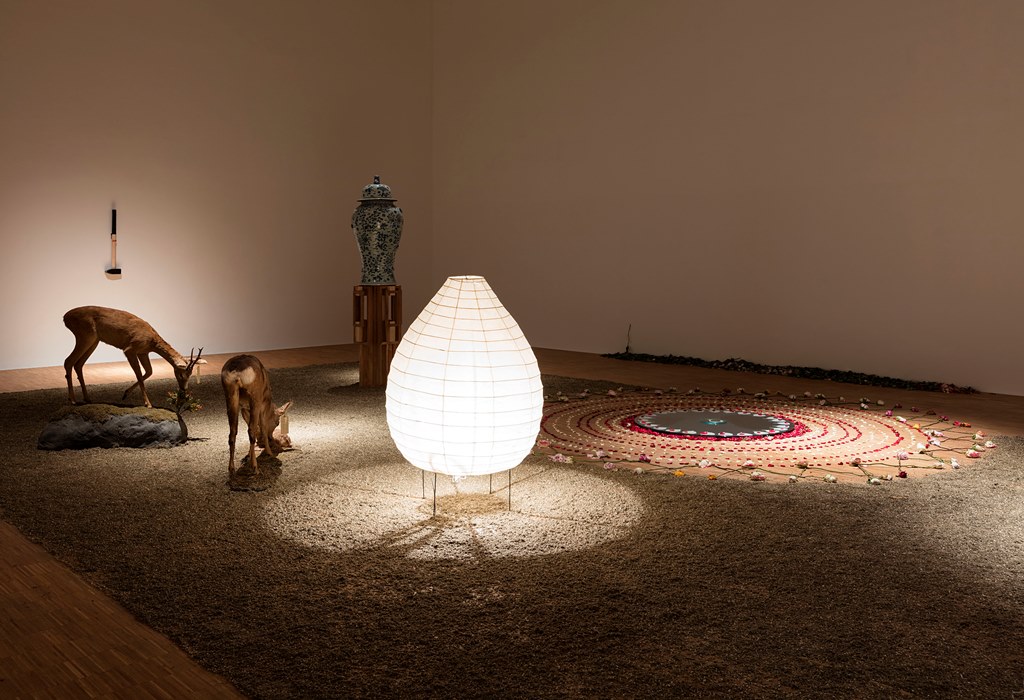
I think those spiritual references you mentioned, as being influential for you—magic, enchantment, rites—are very present in the exhibition. It definitely has this spiritual aura, disquieting and seductive at once, which I think is really beautiful. Someone said about the Stravinsky’s ballet: “provocative harmonic”, which in my opinion relates to your show very well as well. There is a sensitive balance between the presented pieces; the feeling of something special between the people who created them. How do you achieve this energy? And in which way does it differ from the energy of working alone?
I’m not so sure how to answer this. As I have never worked alone, I can’t really make a comparison. I always think that the idea of the artist alone in their studio is completely artificial and basically a falsehood. Like musicians, writers, dancers and other cultural workers, artists love to socialize. We can pretend not to collaborate but each of us is part of a cultural milieu and an ongoing conversation, wrestling with the ideas that seem to us important today. We are collaborators by nature, and I am especially fond of many of the social forms of making: the quilting bee, for example. In my case I am interested in people of varying generations who come together with an outsider’s view, a queer aesthetic, who are moving beyond gender, beyond the various classifications upon which commodification is constructed. The image of the artist alone in his (it is always his) studio is an image of the hero, but we are not heroes. The image of the hero is a construct that lends financial value to artwork. It is important for art dealers and many artists fall into the trap of seeing themselves within that construct. In my opinion this leads to a false sense of importance, to unhappiness and isolation. I value my place within an intergenerational community of queer artists, more than I value a position in the art market.
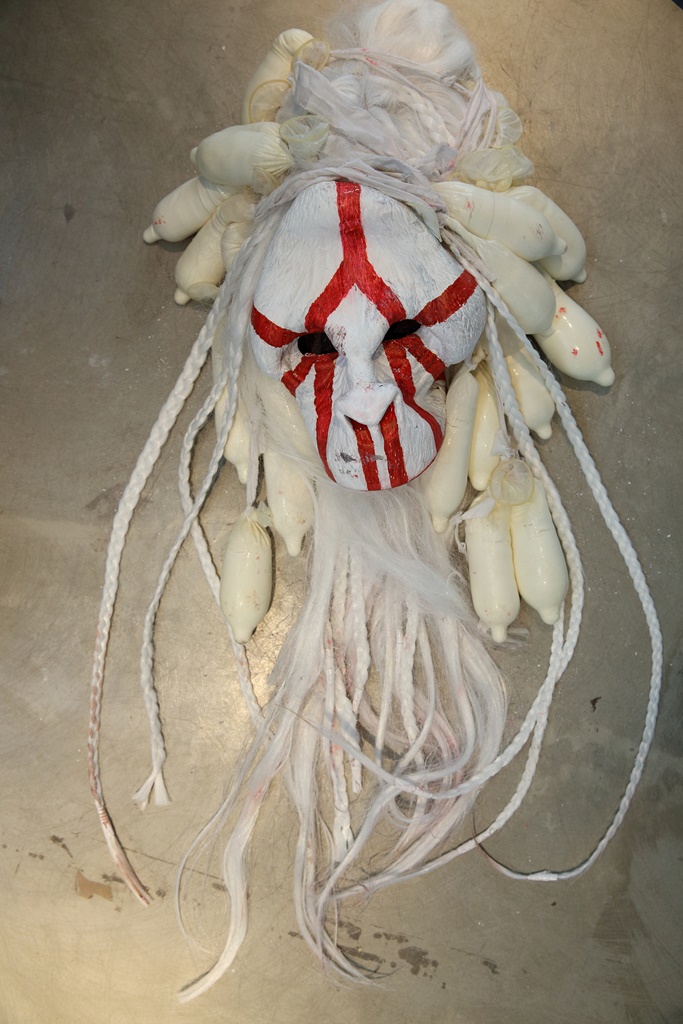
Since more than fifteen years you have been working as a healer, an identity you incorporated into your artwork, and you have taken on spirituality as a key theme in your collaborations and art production. Beuys in his performances tried to demonstrate the potential healing of art, seeing this as a metaphor for transforming the society. You seem to be taking a quite opposite turn. I had a chance to participate two years ago in one of your tent sessions at the Stedelijk Museum in Amsterdam. The situation of being “one by one” with an audience/collaborators seems quite different than the environment of an art show at the gallery. How does the healing manifest itself then?
You ask such a difficult questions! My Tent for Healing, which was shown at the Stedelijk Museum, was an experiment, as so many of my projects are. I wanted to see if I could take my ‘practice’ as a healer, which normally involves 2-hour sessions one-on-one, and transport it to the museum.
In the beginning, we allowed anyone to enter the tent as they pleased, and leave as they pleased. But this became very confusing. And finally we settled on the formula of 20 minutes per participant, as a way of trying to accommodate as many people as possible, but in a meaningful way. At the time, I was quite sick, and I was convinced that I was dying. So the project was as much about my own healing as anyone else’s. It was an opportunity for me to receive healing from many other people. And I am still here today, so I think that it must have been successful!
Some people came to me with something they wanted to give me; some people came to me with something they wanted to tell me. And some people only wanted to talk about the project. I especially remember a young Asian man, who came to tell me that he was HIV+, because he could tell nobody else. He could not tell his friends, because it might somehow go back to his family. And he has never told his family that he was gay. To me this was the most “successful” session of that project, and we have continued to be friends. I think the healing lay in his trust in me as a witness to his secret life as an HIV+ gay man.

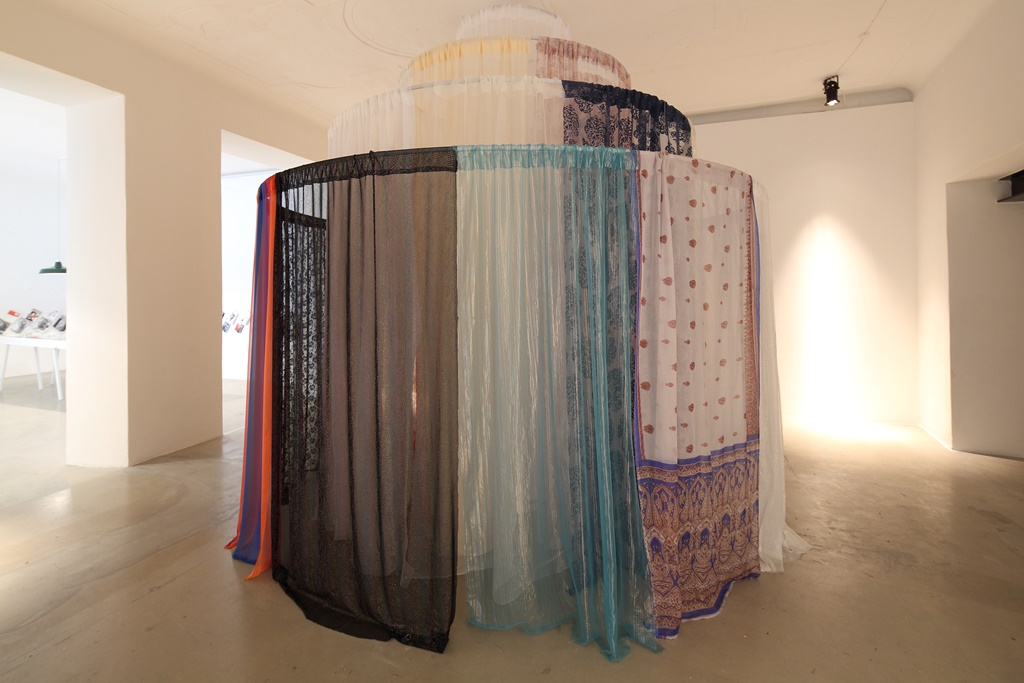
I am wondering then, how does the healing make itself present in the current exhibition in Graz and Salzburg (if it does at all), when there is no physical contact?
I don’t make any claim to be engaged in healing in this two-part exhibition. But as I am a healer by nature, it is never far away. I think that my emphasis on community, and on creating a kind of vessel that holds a number of artists, together in community, somehow reflects on healing. If you could have been at the opening of either of these exhibitions, you might have felt this. In addition, I am always aware of the presence of the spirits of the dead in each location, and I am always focused on giving them permission to pass to the other side. This part is a little difficult to explain, but the community that I form is a community of the living and the dead and that is already in itself healing for both.
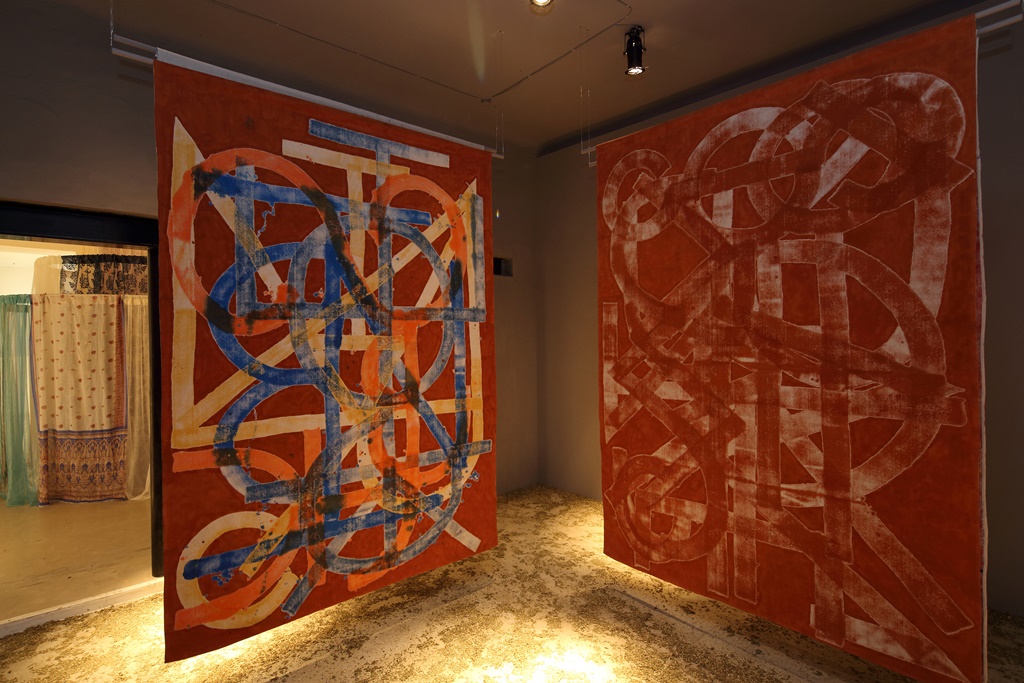
The vision of the spiritual as a constructed universe gives us your simultaneous exhibition Garden of Earthly Delights at the Salzburger Kunstverein, which derives from the merge of Bosch’s painting and the Japanese rock garden of Ryoan-ji. What particularly attracts you in both?
I am a child of my time, which is, as Marshall McLuhan and William Burroughs both declared, the Electronic Revolution
[answer AA]My task of decoding my attraction to these two cultural artifacts, these two gardens, these two images of Paradise, lies at the heart of the project. But I am sorry to say that I do not have an answer to your question: I do not know why I am attracted to both, as you put it; rather I know that both gardens are aspects of my ‘self’.
At this show one can find a doppelgänger of rose petals’ mandala made by Chrysanne Stathacos during the opening at the Grazer Kunstverein. There seem to be more clues that there is a unique relationship between those two shows. What is the connection between the exhibitions in Graz and Salzburg? And how did the idea of a “double show” came about?
In fact the two exhibitions are one. Many themes and motifs knit them together: the twin rose mandalas by Chrysanne most notably, but also the jock straps by Matthias Herrmann, as well as K8 Hardy and Mark Jan Krayenhoff van de Leur; and the repeated anal squirtings of Keith Boadwee. The tent figures largely too: the oversized tent by Mark Jan Krayenhoff van de Leur and myself in Salzburg; tents or tent-like structures by Igshaan Adams, Elijah Burger, and Scott Treleaven (again in collaboration with me) in Graz. The presence of the body is strong in both locations too: the performance robe by Mark Jan Krayenhoff van de Leur in Salzburg; his woven jockstrap and K8 Hardy’s jockstrap dress in Graz… not to mention (again) Matthias Hermann’s photographs of jockstraps in both locations. I could go on, but I think these repetitions are the task of the critics to uncover.
Referring to the rites, so present in your practice – which of your daily rituals are important for you?
As for my daily rituals, the most important for me is my daily morning Instagram post, where I photograph what lies before me: my feet and legs, usually clad in Derek Rose pyjamas, which seem to have become a kind of fetish. I would like to be able to declare an esoteric morning meditation, or exotic ritual. But the truth is, I am a child of my time, which is, as Marshall McLuhan and William Burroughs both declared, the Electronic Revolution.
Sacre du Printemps
Grazer Kunstverein (as part of the steirischer herbst 2015)
26.09 – 29.11.2015
featuring AA Bronson with Igshaan Adams, Ryan Brewer, Elijah Burger, Nicolaus Chaffin, Michael Dudeck, K8 Hardy, Matthias Herrmann, Reima Hirvoen, Yeonjune Jung, Mark Jan Krayenhoff van de Leur, Chrysanne Stathacos, Scott Treleaven, JX Wilkiams
Garden of Earthly Delights
Salzburger Kunstverein
19.09 – 22.11.2015
featuring AA Bronson with Chrysanne Stathacos, Mark Jan Krayenhoff van de Leur, Keith Boadwee, Adrian Hermenides, Matthias Herrmann, Gareth Long, Ebe Oke, JX Williams
Weronika Trojanska
is an artist and art writer


